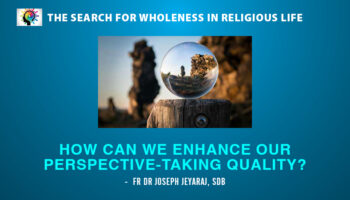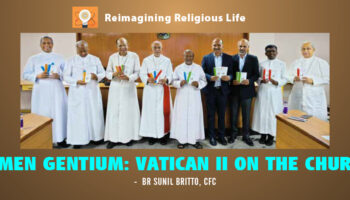Practical guidelines on our journey to God.
The sum of the entire ascetic course consists in these three things—repentance, purity and perfection. What is repentance? Desisting from former sins, and feeling pain at them. What is purity, in a nutshell? A heart which has compassion on every natural thing in creation. What is perfection? Profound humility, which consists in the abandoning of everything visible and invisible—visible meaning everything involved with the senses; invisible meaning all thinking about them. (Discourse LXXIV)
Qatar was until the 7th century an important centre of Christianity and produced important spiritual writers. Isaac of Nineveh was one among them and his treatise on monastic life had a tremendous impact on religious life within the Eastern church. The information regarding his life is scarce and we know very little of his early childhood. It is believed that he became a monk and teacher in his home country and may have moved away during a schism between the Patriarchate and bishops of Qatar. However, when the Patriarch George I visited the area in 676, the schism was healed and Isaac was ordained a bishop of Nineveh (Mosul). Within five months he abdicated his episcopacy and retired to the mountains to lead a solitary life. It was during this period that he would write his treatise on spiritual life offering invaluable spiritual and psychological insights that would leave an imprint on Eastern Christian Spirituality.
Isaac was a brilliant writer and belonged to the tradition of East Syriac writers who lived in what is today Iraq, Iran, Kuwait and Qatar. Most of his writings were based on his personal spiritual experience and written during his old age. Such was its impact that within less than 100 years it was translated into Greek and became popular within both Byzantine and Western Christianity. It is believed that Isaac wrote five volumes of instructions for monks of which much has been lost. Two parts of his work have survived to this date and its first English translation appeared in the year 1923. He primarily dealt with the theme of spiritual growth and prayer and, like Evagrius Ponticus, spoke of a three-stage ascent to God.
Three-Stage Ascent to God
The first phase consists in asceticism, where a person engages in ascetical practices, such as fasting, vigils and the like. There is no short cut to growth in spiritual life. Without going through this phase a person cannot experience inner peace and serenity. During the second phase there is growth in self/control and reverential fear of the Lord. The person has an understanding of the transitory nature of the world and an awareness of its delusions/deceptions. Along with this enlightenment regarding the world, a person also begins to experience God more and more as loving and providential. This sets the stage for another level of the spiritual journey wherein there is a growing abandonment of self leading to greater insights into the reality of God and creation. A person experiences growing harmony in one’s life and prayer progressively elevates the person towards God.
No-Prayer as the Highest Form
Isaac firmly believed that time, place and posture played an important role in prayer and would elaborate it in Texts on Prayer and Outward Posture. A unique contribution of Isaac was the concept of ‘no-prayer’ as the highest form of prayer. It is a state where a person goes beyond conventional prayer and experiences extraordinary stillness, serenity, silence and equanimity. This state may be fleeting or transitory but is a foretaste of eternal life. In his treatise on prayer he underlined its intrinsic relationship with the Eucharist, psalms and liturgy. His suggestions on dealing with distractions in ‘Pure Prayer’ are as relevant today as they were centuries ago. In today’s world of frenzied activity, Isaac of Ninveh’s insights on spiritual life come across as a refreshing pointer towards authentic peace and harmony.
To read the entire article, click Subscribe






